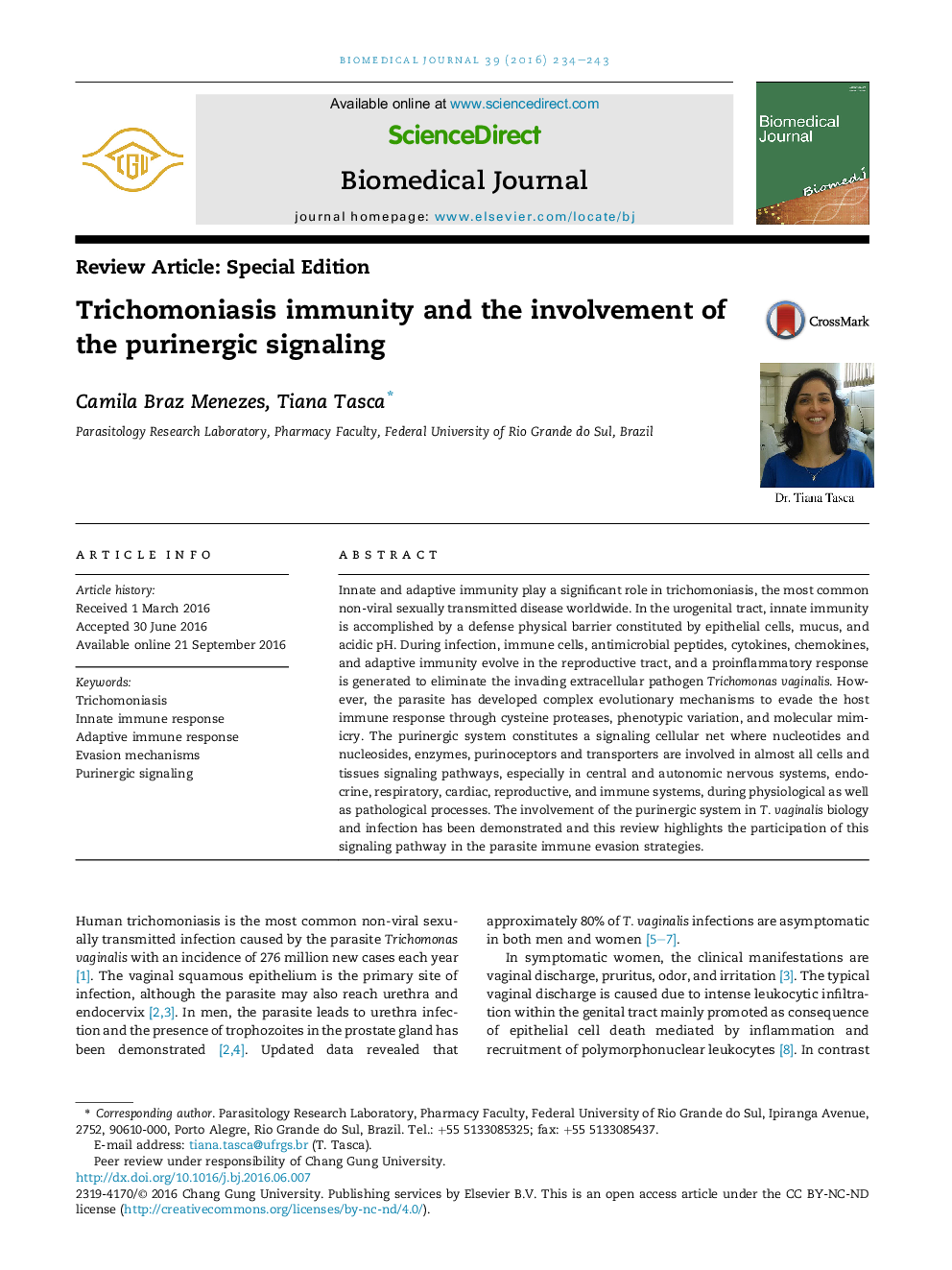| Article ID | Journal | Published Year | Pages | File Type |
|---|---|---|---|---|
| 5524605 | Biomedical Journal | 2016 | 10 Pages |
Innate and adaptive immunity play a significant role in trichomoniasis, the most common non-viral sexually transmitted disease worldwide. In the urogenital tract, innate immunity is accomplished by a defense physical barrier constituted by epithelial cells, mucus, and acidic pH. During infection, immune cells, antimicrobial peptides, cytokines, chemokines, and adaptive immunity evolve in the reproductive tract, and a proinflammatory response is generated to eliminate the invading extracellular pathogen Trichomonas vaginalis. However, the parasite has developed complex evolutionary mechanisms to evade the host immune response through cysteine proteases, phenotypic variation, and molecular mimicry. The purinergic system constitutes a signaling cellular net where nucleotides and nucleosides, enzymes, purinoceptors and transporters are involved in almost all cells and tissues signaling pathways, especially in central and autonomic nervous systems, endocrine, respiratory, cardiac, reproductive, and immune systems, during physiological as well as pathological processes. The involvement of the purinergic system in T. vaginalis biology and infection has been demonstrated and this review highlights the participation of this signaling pathway in the parasite immune evasion strategies.
